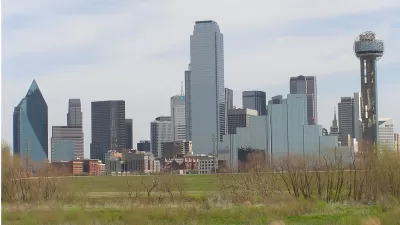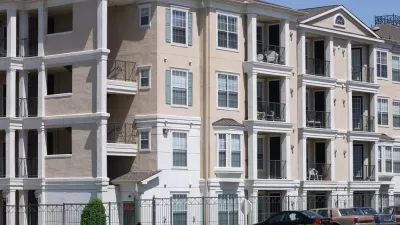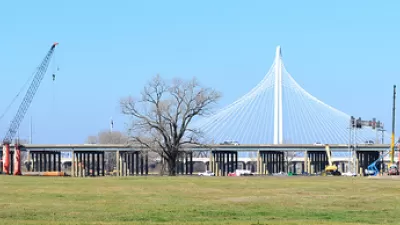Between 1990 and 2016, the Dallas-Fort Worth Metro Area added more jobs than New York City. The overwhelming majority of the new jobs are located in the suburbs.

Several large corporations have opened headquarters in the suburbs of the Dallas-Fort Worth area, the core city has not grown at the same pace. "Recent headlines about large corporate relocations and consolidations, led by the highly publicized moves of Toyota, Liberty Mutual, and State Farm, are just the latest wave of a long trend of employers choosing to locate outside Dallas’s city limits, particularly in Collin and Tarrant counties," W. Michael Cox and Richard Alm report in D Magazine. Companies choosing suburban locations is common in a number of metropolitan areas, but the disparity in Dallas is much larger than other cities around the state and the country. "The Austin, Houston, and San Antonio MSAs haven’t kept pace with DFW in net job creation since 1990. However, their core cities all added more than twice as many jobs as Dallas," Cox and Alm write.
There are number of different theories as to why the Dallas suburbs have pulled in more businesses than the city has. "Suburbs often offer an edge in cost, a key to any business. It starts with cheaper real estate. Taxes are likely to be lower, too. Suburban governments may be business-friendly, eager to bend over backwards to accommodate new employers by cutting red tape and offering financial incentives," Cox and Alm write. They also theorize that the core city is less attractive to many employees who might prefer to live in cities like Plano or Frisco.
FULL STORY: Why Dallas Hasn’t Gotten Its Share of DFW’s Employment Boom

Maui's Vacation Rental Debate Turns Ugly
Verbal attacks, misinformation campaigns and fistfights plague a high-stakes debate to convert thousands of vacation rentals into long-term housing.

Planetizen Federal Action Tracker
A weekly monitor of how Trump’s orders and actions are impacting planners and planning in America.

In Urban Planning, AI Prompting Could be the New Design Thinking
Creativity has long been key to great urban design. What if we see AI as our new creative partner?

King County Supportive Housing Program Offers Hope for Unhoused Residents
The county is taking a ‘Housing First’ approach that prioritizes getting people into housing, then offering wraparound supportive services.

Researchers Use AI to Get Clearer Picture of US Housing
Analysts are using artificial intelligence to supercharge their research by allowing them to comb through data faster. Though these AI tools can be error prone, they save time and housing researchers are optimistic about the future.

Making Shared Micromobility More Inclusive
Cities and shared mobility system operators can do more to include people with disabilities in planning and operations, per a new report.
Urban Design for Planners 1: Software Tools
This six-course series explores essential urban design concepts using open source software and equips planners with the tools they need to participate fully in the urban design process.
Planning for Universal Design
Learn the tools for implementing Universal Design in planning regulations.
planning NEXT
Appalachian Highlands Housing Partners
Mpact (founded as Rail~Volution)
City of Camden Redevelopment Agency
City of Astoria
City of Portland
City of Laramie





























